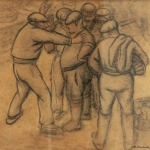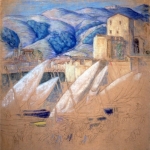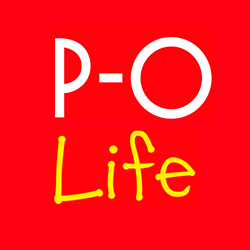
From 20 May to 19 November the Musée d’art modern de Collioure presents an exhibition full of nostalgia for the time when fishing was at the heart of village life and everyone turned out on the Boramar Beach to welcome the fleet.
Augustin Hanicotte, a painter from the north of France, came south for reasons of health. During his stay from 1915 to 1945, with the simplest of materials, brown butcher’s paper, coloured pencils, charcoal or pastels, he lovingly portrayed the life of the village.
In “La grande Plage” (1925-1935) a canvas as large in dimensions (270cmx473cm) as it is in ambition, the beach is a hive of human activity: women balancing baskets of fish on their heads, rows of strong-armed men pulling boats onto the beach, a child pushing an old woman into a waiting cart. The only figure not in movement is that of the curé with hands behind his back. The wealth and variety of gesture, bears comparison with Brueghel’s narrative paintings.
“Etude de pecheurs”, a preliminary study for “La grande plage”, depicts a circle of six sturdy fishermen in deep discussion. One figure reaches his arm across to the shoulder of another, his other hand raised in emphatic gesture. His listener stands rather belligerently, hands on hips, planted in the centre of the composition. What is the point of contention? Fish? Perhaps a woman? Or a family feud? Hanicotte invites us to imagine the human drama.
“Cueillete de figues” shows two boys climbing, their arms and legs intertwined with the limbs and branches of a fig tree. While the foliage is painted in deep greens and blues, our gaze is drawn to the boy in the top branches by the flash of his yellow shirt and white espadrilles.
During his years in Colloure Hanicotte taught drawing to a group of children, known as” les gosses de Collioure”. At the opening of this exhibition I met a 93-year-old man standing in front of picture of the famous clocher (bell-tower) he had drawn when he was a boy of seven. Some of the boys, like Francois Bernadi, went on to become artists in their own right.
Hanicotte’s exhibition shares the museum with a selection of canvases from the permanent collection. It is worth taking a close look at Willy Mucha’s two paintings which are a compliment to Hanicotte’s beach scenes. “Le filet du Lamparo” interprets in abstract terms the spiralled coils of ropes, the elegant lines of hulls and the curved backs bent over their nets.
The summer show offers a contrast in styles rich in parallels and diversity.







